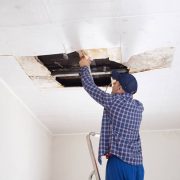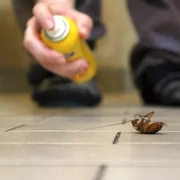When pests show up in your home, your first instinct might be to grab a can of spray, a few traps, or a natural remedy you saw online. And while some DIY pest control methods can help in the short term, they’re not always enough to solve the problem—especially if an infestation is already underway.
At Hot Bugz, we believe homeowners should be informed about their options. So let’s break down what works, what doesn’t, and when it’s time to call in the professionals.
What DIY Pest Control Can Help With
For minor or isolated pest issues, DIY solutions can work—especially if you catch the problem early. Here are a few common approaches that can be effective when used correctly:
1. Store-Bought Baits and Traps
Best for: Ants, roaches, mice, and flies
Ant baits, roach motels, and mouse traps are widely available and can be useful for catching or killing individual pests. Some products attract pests back to their nests to poison the colony, which can offer more lasting control.
When it works: These are best used when the infestation is small and localized. Place them in high-traffic pest areas like under sinks, near trash cans, and along baseboards.
Limitations: If you don’t eliminate the source (like entry points or a nest), pests will likely return.
2. Natural Remedies and Deterrents
Best for: Mild deterrence of ants, spiders, or fruit flies
Natural methods like vinegar sprays, essential oils (like peppermint or tea tree), or citrus peels may repel certain pests. They’re often used by homeowners looking for non-toxic options.
When it works: These methods might help discourage pests from entering a clean, well-sealed home—but they rarely solve an active infestation.
Limitations: Natural remedies tend to wear off quickly and have limited reach. Pests may ignore them if food or nesting opportunities are present.
3. Basic Exclusion Tactics
Best for: Preventing pests like rodents, ants, and spiders
Sealing cracks, installing door sweeps, fixing screens, and cleaning up clutter can significantly reduce the chances of pests entering your home.
When it works: Exclusion is an essential part of any pest control strategy and is most effective when paired with monitoring or treatment.
Limitations: While prevention is key, these measures won’t get rid of pests that are already inside your walls, attic, or crawlspace.
What DIY Pest Control Can’t Do Well
While DIY tactics may help in low-risk situations, they often fall short for larger infestations, hidden pests, or certain types of invasive insects.
Here’s where most DIY methods fail:
1. Deep Infestations
Pests like termites, bed bugs, or large rodent populations often live deep within walls, furniture, or the structure of the home. Sprays and traps won’t reach the heart of the problem.
Example: Spraying a few ants you see on the counter won’t destroy the colony that lives behind your walls or under your foundation.
2. Misidentification
Using the wrong product or method for the type of pest can waste time and money—or even make the problem worse.
Example: Setting out mouse traps won’t help if the problem is actually rats, which are more cautious and require different baiting strategies.
3. Chemical Safety Risks
Many over-the-counter pest control products contain chemicals that, if misused, can be harmful to people, pets, or the environment. Applying too much or using products in enclosed areas can pose health risks.
4. Lack of Long-Term Strategy
DIY approaches often treat the symptom (visible pests) but not the cause (nests, entry points, or attractants). Without ongoing monitoring, pests usually come back.
When to Call a Professional Pest Control Company
You don’t have to wait until things are out of control to call for help. In fact, the earlier you get professional assistance, the easier and more affordable the solution tends to be.
Here are signs it’s time to call Hot Bugz:
- You’re seeing pests repeatedly, even after DIY attempts
- There are droppings, nests, or chewed materials around your home
- You’ve found structural damage (often from termites or rodents)
- You or your family are experiencing bites, rashes, or allergic reactions
- You hear scratching or movement in walls or ceilings
- You’ve spotted multiple types of pests at once (indicating a larger issue)
The Hot Bugz Approach: Why Professional Pest Control Works
Our licensed technicians do more than treat surface symptoms. We identify the type of pest, trace it to the source, and build a treatment and prevention plan that works for your specific home and environment.
What sets us apart:
- Safe, targeted treatments designed for your pest problem
- Thorough inspections to catch hidden or developing infestations
- Ongoing prevention and education so pests don’t return
- Pet- and family-friendly options for your peace of mind
Final Thoughts
DIY pest control has its place—but it’s not a cure-all. If you’re dealing with a persistent problem, mystery pests, or growing frustration, professional help is your best bet for a fast, effective solution.
At Hot Bugz, we don’t just get rid of pests—we keep them from coming back.









Comments